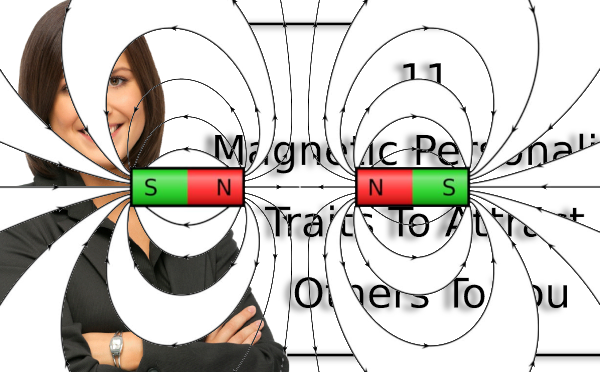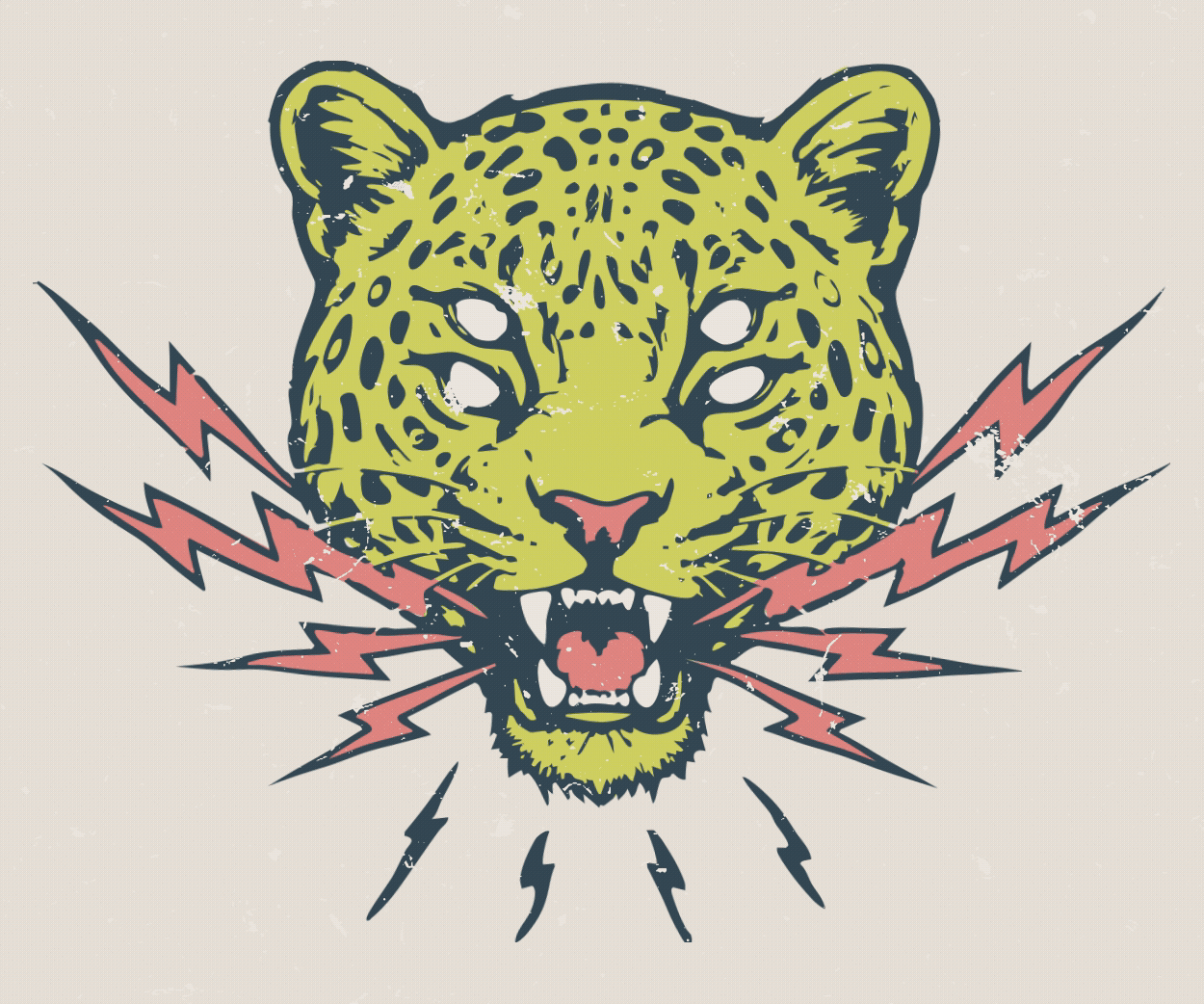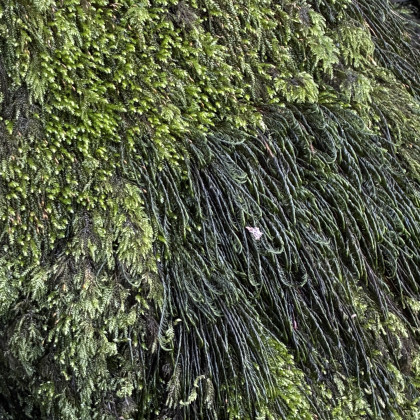-----M+A-G+N-E+T-S+++++
How to Make a Magnet Stronger
By: HowStuffWorks.com it in horizontally, so that the needle pierces on side of the cork and comes out the other side. Keep pushing until the front and back of the needle protrude equally from the cork.
If the needle you're using is too big to push through the cork, you may simply rest it on top of the cork.
If you don't have a reated by the force generated by the aligned atoms. Thus, the object and the magnet bond.
How do you make a stronger magnet?
Place your weak magnet next to a much stronger magnet. This will realign the electrons in the weaker magnet. To do this, hit the weaker magnet with the larger, much stronger magnet.
What can magnets attractice a disc from an old wine cork to provide a base for the compass.
A bowl of water. Suspending the compass in water allows the magnetized needle to align with the earth's magnetic poles.
2
Magnetize the needle. Rub the needle using a magnet, a nail, or a piece of fur, which creates a small electric current. Rub the needle in the same direction at least 50 times to magnetize it.[6]
Image titled Make a Magnet Step 11
3
Stick the needle through the cork. Slide it in horizonxt come from a large current traveling through a wire — it comes from the movement of electrons.
Many people imagine electrons as tiny particles that orbit an atom's nucleus the way planets orbit a sun. As quantum physicists currently explain it, the movement of electrons is a little more complicated than that. Essentially, electrons fill an atom's
an orbital magnetic moment. The magnetic moment is a vector — it has a magnitude and a direction. It's related to both the magnetic field strength and the torque that the field exerts. A whole magnet's magnetic moments come from the moments of all of
wire around the positive side of the battery and the other end around the negative side of the battery. Use a small piece of masking tape to secure the wire in place on both si
Magnets can be found in nature (magnetite, alsat exactly makes a magnet stick to certain metals? Or why don't they stick to other metals? Why do they attract or repel each other, depending on their positioning? And what makes neodymium magnets so much stronger than the ceramic magnets we played with as children?
To understand the answers to these questions, it helps to have a basic definition of a magnet. Magnets are objects that produce magnetic fields and attract metals like iron, nickel and cobalt. The magnetic field's lines of force
cork coin, use another lightweight object that floats, such as a leaf.
4
Float the magnet. Place the magnetized needle on the surface of the water in the bowl. Watch as it moves to align itself from north and south along the poles. If it doesn't move, remove the needle from the cork, rub it 75 times with the magnetizer, and try again.
Community Q&A
Question
Is a magnet natural or manmade?
wikiHow Staff Editor
wikiHow Staff Editor
Staff Answer
A magnet can be either natural or manmade. In nature, magnetite (also known as lodestone) is a strong, permanent natural form of magnet that was used for centuries in compasses and other objects as a magnet. Other natural magnets are weak (pyrrhotite, ferrite, and columbite), so aren’t of much use as a magnet. Manmade magnets are far more commonplace in everyday use today and come in either temporary or permane
trongest naturally occurring magnet. Notice how this piece is attracting small strips of metal. WIKIMEDIA/(CC BY-SA 4.0)
Many of today's electronic devices require magnets to function.
a piece of fur to magnetize the needle.
A cross section of cork. Slice a disc from an old wine cork to provide a base for the compass.
A bowl of water. Suspending the compass in water allows the magnetized needle to align with the earth's magnetic poles.
2
Magnetize the needle. Rub the needle using
Contributors | Updated: Mar 31, 2021
A young boy looking at levitating iron bolts in a strong magnetic field.
Magnets can be incredibly useful but sometimes need a little help. ETHAMPHOTO / GETTY IMAGES
Magnets have a wide range of uses, from sticking things to your refrigerator, to picking up metallic objects, to keeping cabinet doors closed. Some magnets can get weaker over time and no longer serve their purpose. Others are too lign the magnetic
Magnets can attract metals such as iron and steel. In fact, if you rub a very strong magnet on a piece of iron or steel, that piece of metal will temporarily become a magnet. Copper and gold is also attracted to magnets.
Share:
Citation
How Magnets Work
By: Tracy V. Wilson & Chris Pollette | Updated: Sep 20, 2022
magnet and iron filings
Iron filings beautifully show off the opposing fields of the same poles of two bar magnets. SPENCER GRANT/PHOTOGRAPHER'S CHOICE RF/GETTY IMAGES
You probably know that magnets attract specific metals and they have north and south poles. Opposite poles attract each other while like poles repel each other. Magnetic and electrical fields are related, and magnetism, along with gravity and strong and weak atomic forces, is one of the four fundamental forces in the universe.
But none of those facts answers the most basic question: Wh
magnetic properties of the magnetized paperclip.
Experiment with different
?re times and try again.
Try picking up other paper clips and larger objects to determine how strong the magnet is.
Consider recording the length of time the paper clip stays magnetized after a certain number of rubs. Experiment with different types of metal, like pins or nails, to see which one makes the strongest, longest-lasting magnet.
Method
2
Making an Electromagnet
Image titled Make a Magnet Step 4
1
Gather supplies. Electromagnets are created by running an electric current through a piece of metal to create a magnetic field. This can be done on a small scale using these supplies, which are available at hardware stores:
A large iron nail
3 feet of thin coated copper wire
A D-cell battery
Small magnetic objects, like paperclips or pins
Wire strippers
Masking tape
2
Strip the ends of the wire. Use the wire strippers to remove a few centimeters of insulation from either end of the copper wire. The uninsulated ends will be wrapped around the ends of the battery.[3]
Image titled Make a Magnet Step 6
3
Wrap the nail. starting about 8 inches from the end of the wire, wrap the nail tightly. Each wrap should be touching the last, but don't overlap them. Continue wrapping until the nail is covered from head to tip.[4]
Make sure you wrap in the same direction down the nail. In order to create a magnetic field, the electricity must flow in the same direction.
4
Connect the battery. Wrap one end of the exposed
ic field while iron oxide was molten and flexible.
The most common method of making magnets today involves placing metal in a magnetic field. The field exerts torque on the material, encouraging the domains to align. There's a slight delay, known as hysteresis, between the application of the field and the change in domains; it takes a few moments for the domains to start to move. Here's what happens:
The magnetic domains rotate, allowing them to line up along the north-south lines of the magnetic field.
Domains that already pointed
trongest naturally occurring magnet. Notice how this piece is attracting small strips of metal. WIKIMEDIA/(CC BY-SA 4.0)
Many of today's electronic devices require magnets to function.
a piece of fur to magnetize the needle.
A cross section of cork. Sl
paperclip sizes, and uncoated versus coated paperclips.
Gather smaller objects in a range of sizes and metals to see which ones will stick to the paperclips.
2
Rub the magnet against the paperclip. Move it in the same direction, rather than back and forth. Use the same quick motion you'd use to light a match. Continue rubbing the paperclip with the magnet 50 times, as quickly as you can.[1]
Image titled Make a Magnet Step 3
3
Touch the paperclip against the smaller piece of metal. Does the small piece of metal stick to the paperclip? If so, you've successfully magnetized it.[2]
If the metal won't stick to the paperclip, rub it 50 mo domains inside the weakle and enter its south pole. Permanent or hard magnets create their own magnetic field all the time. Temporary or soft magnets produce magnetic fields while in the presence of a magnetic field and for a short while after exiting the field. Electromagnets produce magnetic fields only when electricity travels through their wire coils.
Because electrons and protons are tiny magnets, all materials have some sort of magnetic property. In most materials, however, the way electrons spin in opposite directions cancels out an atom's magnetic properties. Metals are the most common choices to manufacture magnets. Although some are made from simple metals, combinations of metals — called alloys — produce magnets of different strengths. For example:
Ferrites or ceramic magnets: These are like those used in refrigerator magnets and elementary-school science experiments. They contain iron oxide and other metals in a ceramic composite. A ceramic magnet known as lodestone, or magnetite, was the first t formed. The domains aligned with Earth's magnetits atoms.
In metals like iron, the orbital magnetic moment encourages nearby atoms to align along the same north-south field lines. Iron and other ferromagnetic materials are crystalline. As they cool from a molten state, groups of atoms with parallel orbital spin line up within the crystal structure. This forms the magnetic domains discussed in the previous section.
You may have noticed that the materials that make good magnets are the same as the materials magnets attract. This is because magnets attract materials that have unpaired electrons that spin in the same direction. In other words, the quality
can use to test the
o known as lodestone) but most are made by humans.
Not Helpful 12Helpful 21
See more answers
Ask a Question
What is your question?
Submit
Tips
Try with something small to pick up with the magnet.
Make sure to keep rubbing it in the same direction.
The more times you rub the paper clip across the magnet the more it will hold.a
force may loosen the tiny magnetic domains in the bar so they can point north like they are supposed to [source: Newton].
Magnets that have lost their strength Sometimes you can recharge a magnet that has lost some of its original charge. If you can find a very strong magnet, repeatedly rub it across your weakened magnet. The strong magnet will reaform of
magnetic material discovered and occurs naturally. Even though the ceramic magnet has been around for so long, they weren't commercially produced until 1952. Although they're common and keep their magnetism, they tend to have a weaker magnetic field (known as the energy product) than other types of magnets.
Alnico magnets: These were developed in the 1930s and are made from aluminum, nickel and cobalt. They're stronger than ceramic magnets, but not as strong as the ones that incorporate a class of elements known as rare-earth metals.
Neodymium magnets: These contain iron, boron and the rare-earth element neodymium, and as of this writing, they are the strongest commercially available magnets. They first appeared in the 1980s after scientists at the General
ened magnet [source: Luminaltech].
Magnet stacking One way to make weak magnets stronger is by stacking more of them together. There's a big problem with this, though. Magnets attract each other in opposite directions, which will lower their overall strength. If you can find a way to hold or clamp them together, so they're aligned in the same direction, they will in fact produce a stronger magnetic field [source: Balbach].
Originally Published: Jul 11, 2011
Magnet FAQs
What materials would make the strongest magnet?
The strongest magnets are made from an alloy of iron, boron, and neodymium.
How do magnets work?
Magnets have north and south poles that are attracted to each other. When an object is attracted to a magnet, it causes the the north-seeking poles of the atoms in the object to line up in the same direction. A magnetic field is c
exit the magnet from its north po
Motors Research Laboratories and the Sumitomo Special Metals Company published their research.
Samarium cobalt magnets: These were developed by scientists at the Dayton University Research University in the 1960s, and combine cobalt with the rare-earth element samarium. In the past few years, scientists have also discovered magnetic polymers, or plastic magnets. Some of these are flexible and moldable. However, some work only at extremely low temperatures, and others pick up only very lightweight materials, like iron filings.
Contents
Making Magnets: The Basics
Making Magnets: The Details
Why Magnets Stick
Magnet Myths
Making Magnets: The Basics
lodestone
Lodestone, seen here, is a weak for what we want themQ&A
Question
Is a magnet natural or manmade?
wikiHow Staff Editor
wikiHow Staff Editor
Staff Answer
A magnet can be either natural or manmade. In nature, magnetite (also known as lodestone) is a strong, permanent natural form of magnet that was used for centuries in compasses and other objects as a magnet. Other natural magnets are weak (pyrrhotite, ferrite, and columbite), so aren’t of much use as a magnet. Manmade magnets are far more commonplace in everyday use today and come in either temporary or permane
in a north-south direction when suspended. Eventually, scientist William Gilbert explained that this north-south alignment of magnetized needles was due to Earth behaving like an enormous magnet with north and south poles.
A compass needle isn't nearly as strong as many of the permanent magnets used today. But the physical process that magnetizes compass needles and chunks of neodymium alloy is essentially the same. It relies on microscopic regions known as magnetic domains, which are part of the physical structure of ferromagnetic materials, like iron, cobalt and nickel. Each domain is essentially a tiny, self-contained magnet with a north and south pole. In an unmagnetized
e to the magnetic force of the North Pole. Carefully take the magnet off the water and lay it on a hard (preferably wooden) surface in the exact same north-south position. Strike one end of the magnet hard with a hammer repeatedly. The
How to Make a Magnet
Download Article
METHODS
1Making a Paperclip Magnet
2Making an Electromagnet
3Making a Compass Magnet
OTHER SECTIONS
Questions & Answers
e to the magnetic force of the North Pole. Carefully take the magnet off the water and lay it on a hard (preferably wooden) surface in the exact same north-south position. Strike one end of the magnet hard with a hammer repeatedly. The
How to Make a Magnet
Download Article
METHODS
1Making a Paperclip Magnet
2Making an Electromagnet
3Making a Compass Magnet
OTHER SECTIONS
Questions & Answers
Tips and Warnings
for to begin with. Unfortunately, there isn't always a way to make a magnet stronger. However there are a few ways to make some types of magnets stronger. Here's how to make certain magnets stronger:Iron bar magnets Fill a bowl or pan with
Float the magnet. Place the magnetized needle on the surface of the water in the bowl. Watch as it moves to align itself from north and south along the poles. If it doesn't move, remove the needle from the cork, rub it 75 times with the mato do is encourage the magnetic domains in a piece of metal to point in the same direction. That's what happens when you rub a needle with a magnet — the exposure to the magnetic field encourages
Tips and Warnings
Related Articles
References
Article Summary
Author Info
Last Updated: January 26, 2023 Tested
Magnets are made by exposing ferromagnetic metals like iron and nickel to magnetic fields. When these metals are heated to a certain temperature, they become permanently magnetized. It's also possible to temporarily magnetize them by using a variety of methods you can try safely at home. Learn how to make a paperclip magnet, an electromagnet, and a magnet you can use as a compass.Method
1
Making a Paperclip Magnet
Image titled Make a Magnet Step 1
1
Gather supplies. A simple temporary magnet can be made with a tiny piece of metal, such as a paperclip, and a refrigerator magnet. Gather these items as well as a smaller piece of metal, such as an earring back or a tiny nail, that youhand, have several unpaired electrons that have the same spin. Iron, for example, has four unpaired electrons with the same spin. Because they have no opposing fields to cancel their effects, these electrons have
ugh the cork, you may simply rest it on top of the cork.
If you don't have a cork coin, use another lightweight object that floats, such as a leaf.
4
Float the magnet. Place the magnetized needle on the surface of the water in the bowl. Watch as it moves to align itself from north and south along the poles. If it doesn't move, remove the needle from the cork, rub it 75 times with the mato do is encourage the magnetic domains in a piece of metal to point in the same direction. That's what happens when you rub a needle with a magnet — the exposure to the magnetic field encourages
ferromagnetic material, each domain's north pole points in a random direction. Magnetic domains that are oriented in opposite directions cancel one another out, so the material does not produce a net magnetic field.
In magnets, on the other han
some water. Find something that will float on the water. Lay the magnet on top of this object. The magnet will twirl in the water until it comes to rest pointing exactly north and south du the domains to align. Other ways to align magnetic domains in a piece of metal include:Placing it a strong magnetic field in a north-south direction
Holding it in a north-south direction and repeatedly striking it with a hammer, physically jarring the domains into a weak alignment
Passing an electrical current through it
Two of these methods are among scientific theories about how lodestone forms in nature. Some scientists speculate magnetite becomes magnetic when struck by lightning. Others theorize that pieces of magnetite became magnets when Earth was firsmagnetite and is the snt forms.
Not Helpful 8Helpful 26
Question
How do you magnetize a piece of metal?
wikiHow Staff Editor
wikiHow Staff Editor
Staff Answer
You can magnetize metal with another magnet, by striking it, with a battery or by using special tools. For more help in a detailed way, see How to Magnetize Metal. If you’re using steel, each of these methods is explained in detail here: How to Magnetize Steel.
Not Helpful 11Helpful 26
Question
Where do magnets originate?
wikiHow Staff Editor
wikiHow Staff Editor
Staff Answer
pairs. If one of the electrons in a pair spins upward, the other spins downward. It's impossible for both of the electrons in a pair to spin in the same direction. This is part of a quantum-mechanical principle known as the Pauli Exclusion Principle.
Even though an atom's electrons don't move very far, their movement is enough to create a tiny magnetic field. Since paired electrons spin in opposite directions, their magnetic fields cancel one another out. Atoms of ferromagnetic elements, on the other
that turns a metal into a magnet also
gnetizer, and try again.
Community
Related Articles
References
Article Summary
Author Info
Last Updated: January 26, 2023 Tested
Magnets are made by exposing ferromagnetic metals like iron and nickel to magnetic fields. When these metals are heated to a certain temperature, they become permanently magnetized. It's also possible to temporarily magnetize them by using a variety of methods you can try safely at home. Learn how to make a paperclip magnet, an electromagnet, and a magnet you can use as a compass.Method
1
Making a Paperclip Magnet
Image titled Make a Magnet Step 1
1
Gather supplies. A simple temporary magnet can be made with a tiny piece of metal, such as a paperclip, and a refrigerator magnet. Gather these items as well as a smaller piece of metal, such as an earring back or a tiny nail, that youhand, have several unpaired electrons that have the same spin. Iron, for example, has four unpaired electrons with the same spin. Because they have no opposing fields to cancel their effects, these electrons haveugh the cork, you may simply rest it on top of the cork.
If you don't have a cork coin, use another lightweight object that floats, such as a leaf.
4d, most or all the magnetic domains point in the same direction. Rather than canceling one another out, the microscopic magnetic fields combine to create one large magnetic field. The more domains point in the same direction, the stronger the overall field. Each domain's magnetic field extends from its north pole into the south pole of the domain ahead of it.
This explains why breaking a magnet in half creates two smaller magnets with north and south poles. It also explains why opposite poles attract — the field lines leave the north pole of one magnet and naturally enter the south pole of another, essentially creating one larger magnet. Like poles repel each other because their lines of force are traveling in opposite directions, clashing with each other rather than moving together.
Making Magnets: The Details
magnetic fields
The most common method of making magnets today involves placing metal in a magnetic field. CRSTOCKER/SHUTTERSTOCK
To make a permanent magnet, all you have
attracts the metal to magnets. Many other elements are diamagnetic — their unpaired atoms create a field that weakly repels a magnet. A few materials don't react with magn
This reliance on magnets is relatively recent, primarily because most modern devices require magnets that are stronger than the ones found in nature. Lodestone, a form of magnetite, is the strongest naturally occurring magnet. It can attract small objects, like paper clips and staples.
By the 12th century, people had discovered that they could use lodestone to magnetize pieces of iron, creating a compass. Repeatedly rubbing lodestone along an iron needle in one direction magnetized the needle. It would then align itself
trongest naturally occurring magnet. Notice how this piece is attracting small strips of metal. WIKIMEDIA/(CC BY-SA 4.0)
Many of today's electronic devices require magnets to function.
a piece of fur to magnetize the needle.
A cross section of cork. Slice a disc from an old wine cork to provide a base for the compass.
A bowl of water. Suspending the compass in water allows the magnetized needle to align with the earth's magnetic poles.
2
Magnetize the needle. Rub the needle using a magnet, a nail, or a piece of fur, which creates a small electric current. Rub the needle in the same direction at least 50 times to magnetize it.[6]
Image titled Make a Magnet Step 11
3
Stick the needle through the cork. Slide a magnet, a nail, oxfairly complicated, and without them the idea of magnetic attraction can be mystifying. So it's not surprising that people have viewed magnetic materials with suspicion for much of history.









Dodaj komentar
Komentiraj